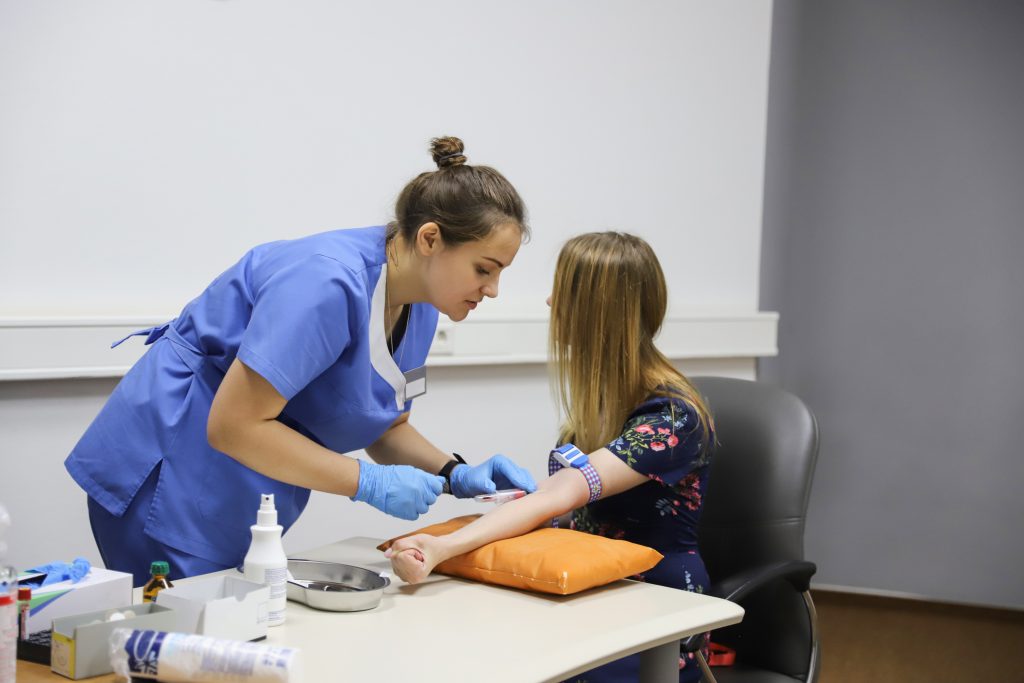Northeast Medical Institute - New Haven Campus Phlebotomy Course & Cna Class Can Be Fun For Everyone
Northeast Medical Institute - New Haven Campus Phlebotomy Course & Cna Class Can Be Fun For Everyone
Blog Article
The 6-Second Trick For Northeast Medical Institute - New Haven Campus Phlebotomy Course & Cna Class
Table of ContentsThe Main Principles Of Northeast Medical Institute - New Haven Campus Phlebotomy Course & Cna Class The smart Trick of Northeast Medical Institute - New Haven Campus Phlebotomy Course & Cna Class That Nobody is Talking AboutRumored Buzz on Northeast Medical Institute - New Haven Campus Phlebotomy Course & Cna ClassNortheast Medical Institute - New Haven Campus Phlebotomy Course & Cna Class for BeginnersThe 7-Minute Rule for Northeast Medical Institute - New Haven Campus Phlebotomy Course & Cna ClassIndicators on Northeast Medical Institute - New Haven Campus Phlebotomy Course & Cna Class You Should Know
However, the use of such devices should be gone along with by other infection prevention and control techniques, and training in their usage. Not all security tools apply to phlebotomy. Prior to choosing a safety-engineered tool, users need to completely check out available gadgets to establish their ideal use, compatibility with existing phlebotomy methods, and efficiency in safeguarding team and people (12, 33).For settings with reduced resources, price is a driving element in procurement of safety-engineered gadgets. Where safety-engineered devices are not available, experienced use of a needle and syringe is acceptable.
labelling); transport problems; analysis of outcomes for professional monitoring. In an outpatient division or facility, supply a committed phlebotomy workstation containing: a clean surface with two chairs (one for the phlebotomist and the other for the person); a hand wash basin with soap, running water and paper towels; alcohol hand rub. In the blood-sampling space for an outpatient division or facility, provide a comfy reclining sofa with an arm remainder.
The Definitive Guide to Northeast Medical Institute - New Haven Campus Phlebotomy Course & Cna Class
Ensure that the indications for blood sampling are plainly defined, either in a composed method or in recorded guidelines (e.g. in a research laboratory kind). Accumulate all the devices required for the procedure and place it within risk-free and very easy reach on a tray or trolley, ensuring that all the things are plainly visible.
Present on your own to the individual, and ask the individual to mention their full name. Inspect that the lab type matches the patient's identity (i.e. match the patient's details with the laboratory form, to make sure accurate recognition).
Make the individual comfy in a supine setting (if possible). The patient has a right to decline an examination at any type of time prior to the blood sampling, so it is important to make certain that the client has actually understood the treatment look at this site - CNA Training.
Our Northeast Medical Institute - New Haven Campus Phlebotomy Course & Cna Class Statements
Extend the person's arm and inspect the antecubital fossa or forearm. Locate a capillary of a good size that is noticeable, straight and clear.
DO NOT insert the needle where blood vessels are drawing away, since this enhances the possibility of a haematoma. Finding the capillary will assist in identifying the correct dimension of needle.
Samplings from main lines carry a threat of contamination or erroneous lab test results. It is appropriate, but not ideal, to draw blood samplings when first presenting an in-dwelling venous tool, before connecting the cannula to the intravenous fluids.
Our Northeast Medical Institute - New Haven Campus Phlebotomy Course & Cna Class Diaries
Failing to allow enough contact time enhances the threat of contamination. DO NOT touch the cleaned up website; in specific, DO NOT place a finger over the blood vessel to assist the shaft of the revealed needle.
Ask the individual to develop a clenched fist so the blood vessels are much more noticeable. Enter the vein swiftly at a 30 level angle or less, and remain to introduce the needle along the capillary at the simplest angle of access - PCT Training. Once adequate blood has been gathered, release the tourniquet BEFORE withdrawing the needle
How Northeast Medical Institute - New Haven Campus Phlebotomy Course & Cna Class can Save You Time, Stress, and Money.
Withdraw the needle carefully and apply mild pressure to the website with a tidy gauze or completely dry cotton-wool sphere. Ask the person to hold the gauze or cotton woollen in position, with the arm expanded and elevated. Ask the client NOT to flex the arm, because doing so triggers a haematoma.

The Buzz on Northeast Medical Institute - New Haven Campus Phlebotomy Course & Cna Class
Where feasible, keep the tubes in a shelf and move the shelf in the direction of you - https://issuu.com/northeastmed#google_vignette. If the example tube does not have a rubber stopper, inject exceptionally gradually right into the tube as minimizing the pressure and rate used to move the specimen minimizes the risk of haemolysis.

Report this page